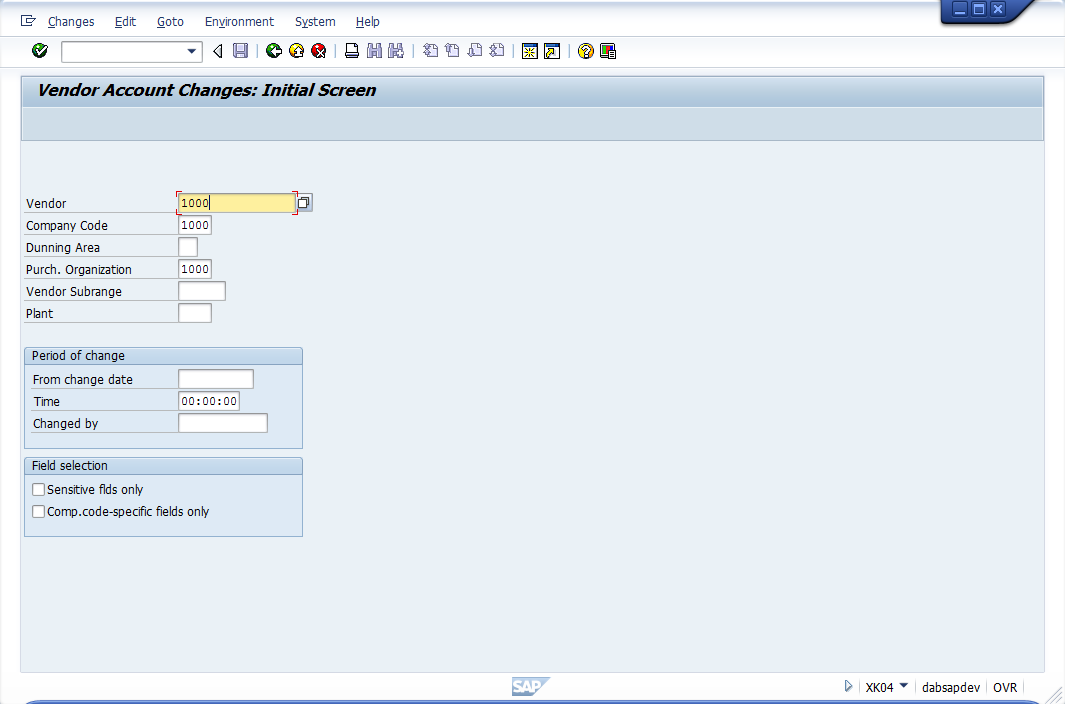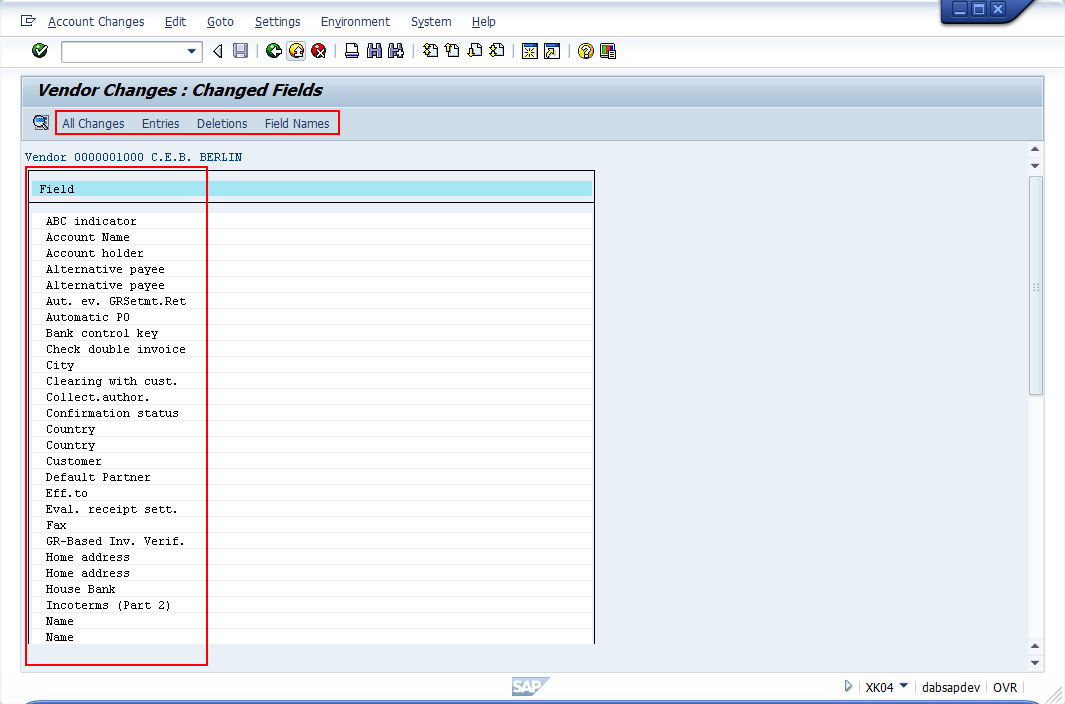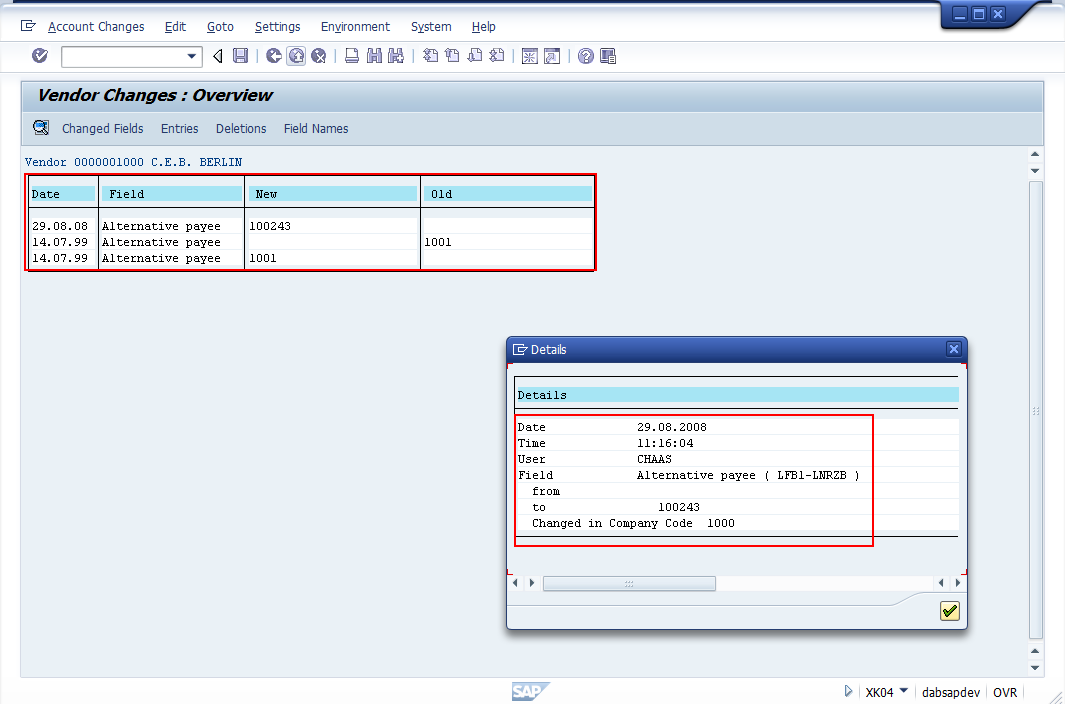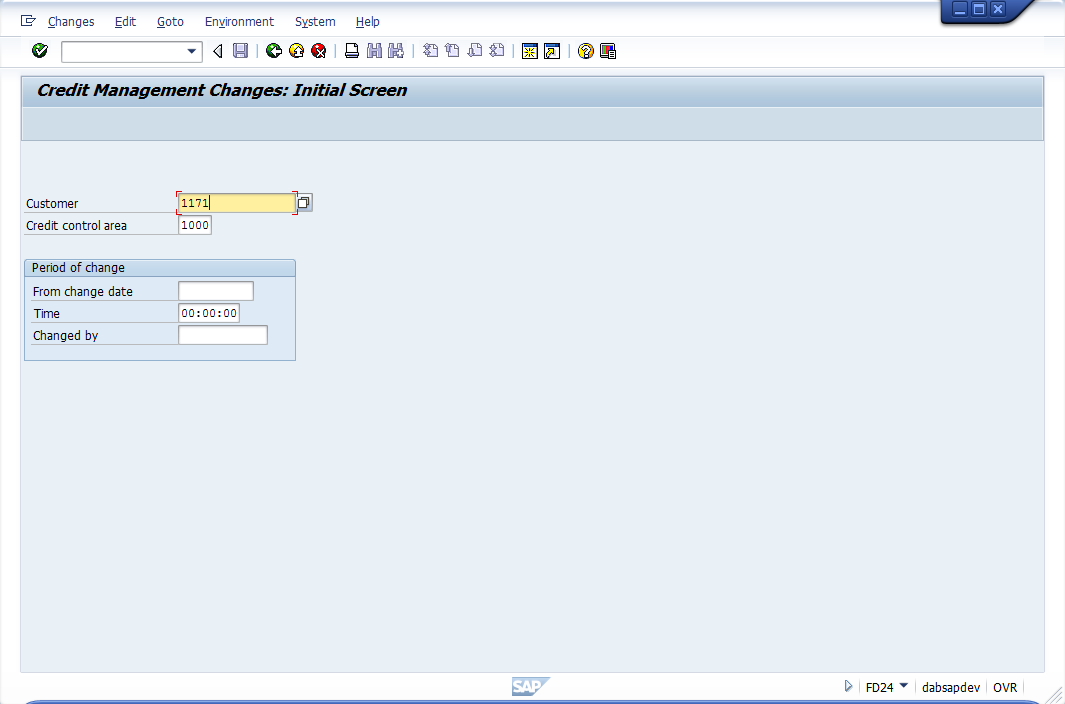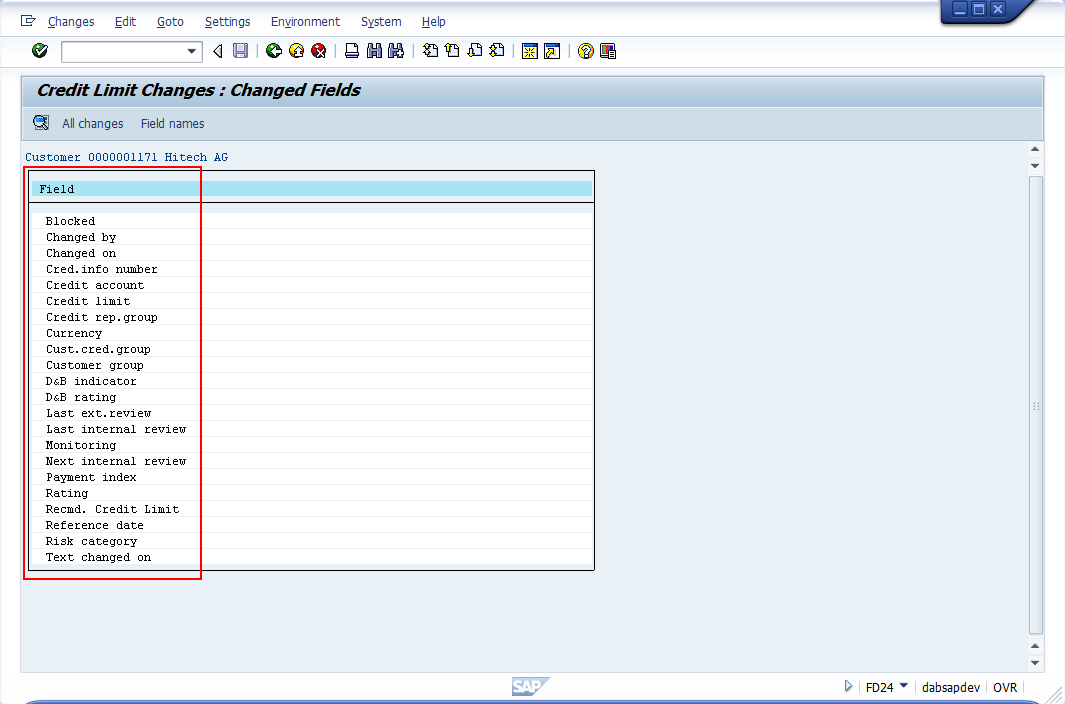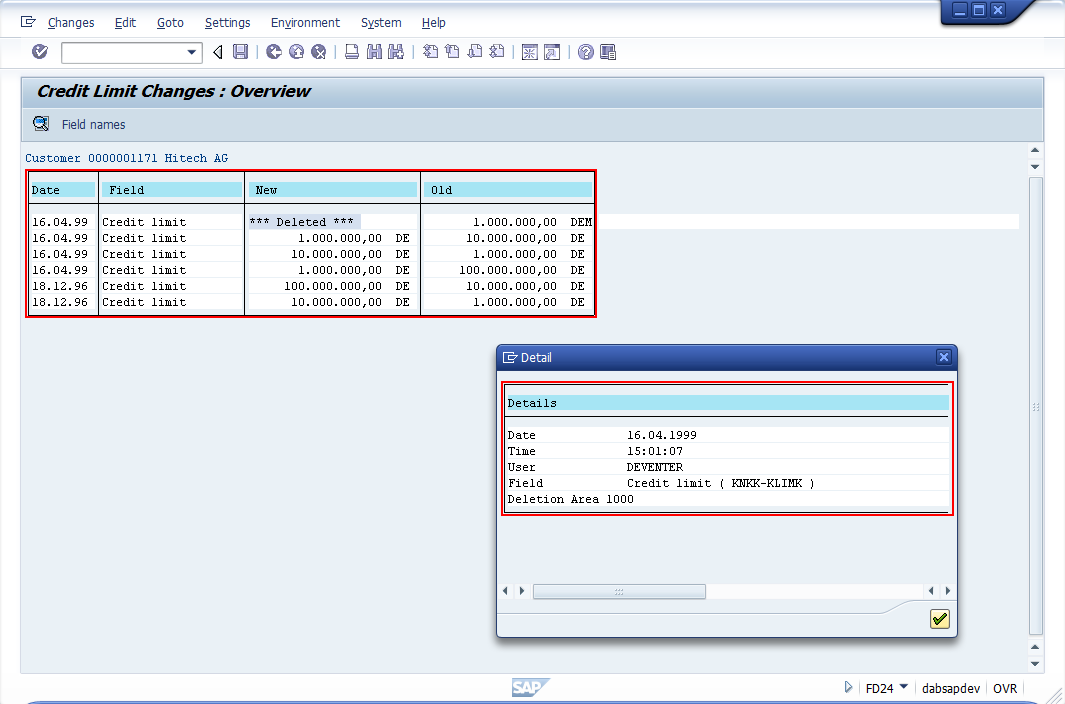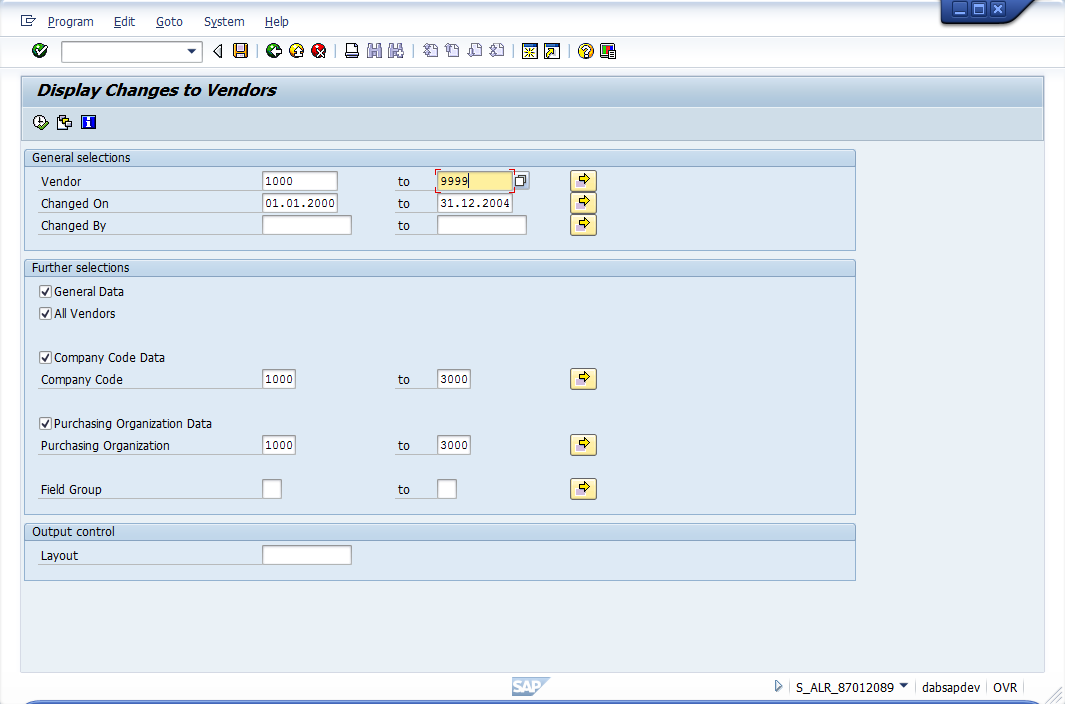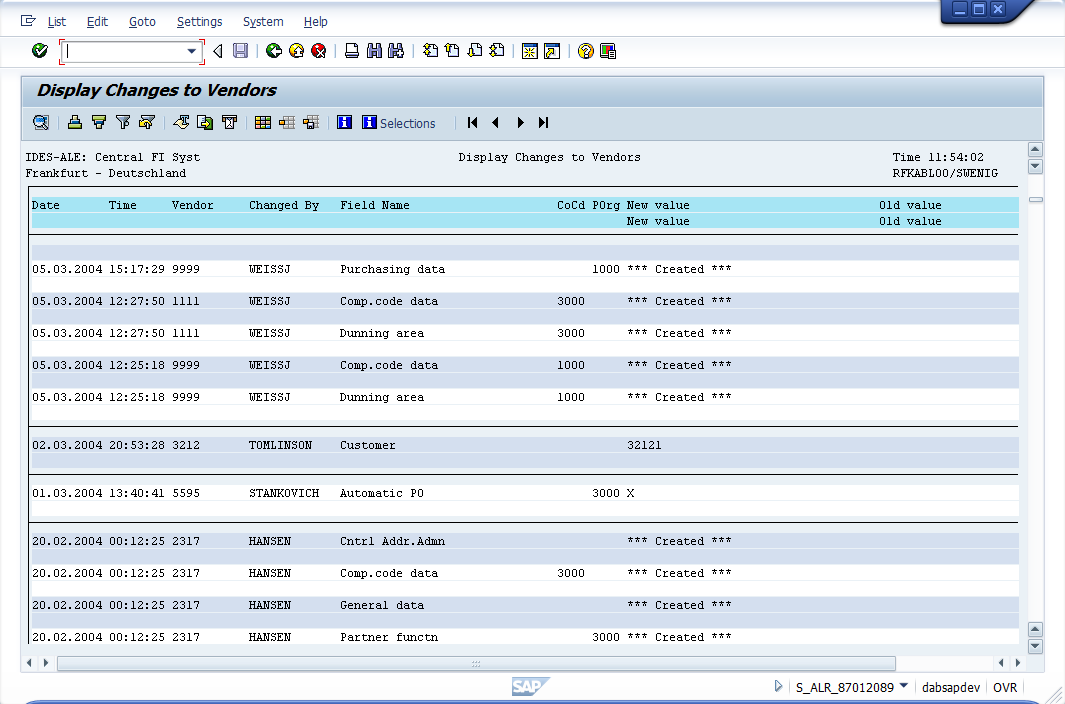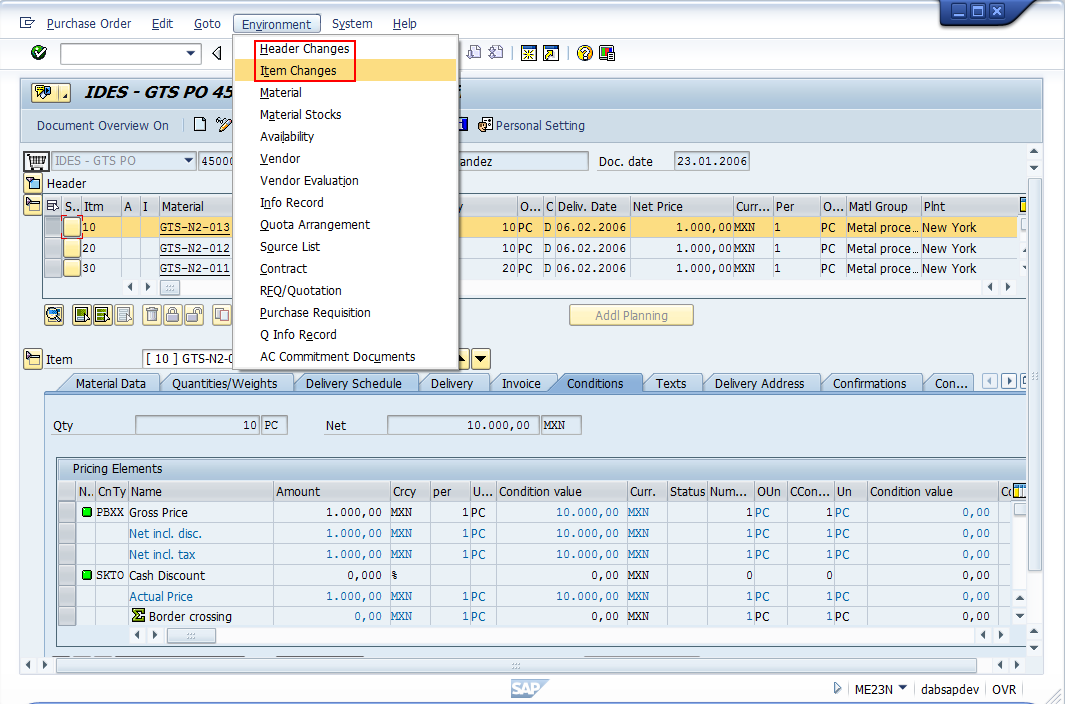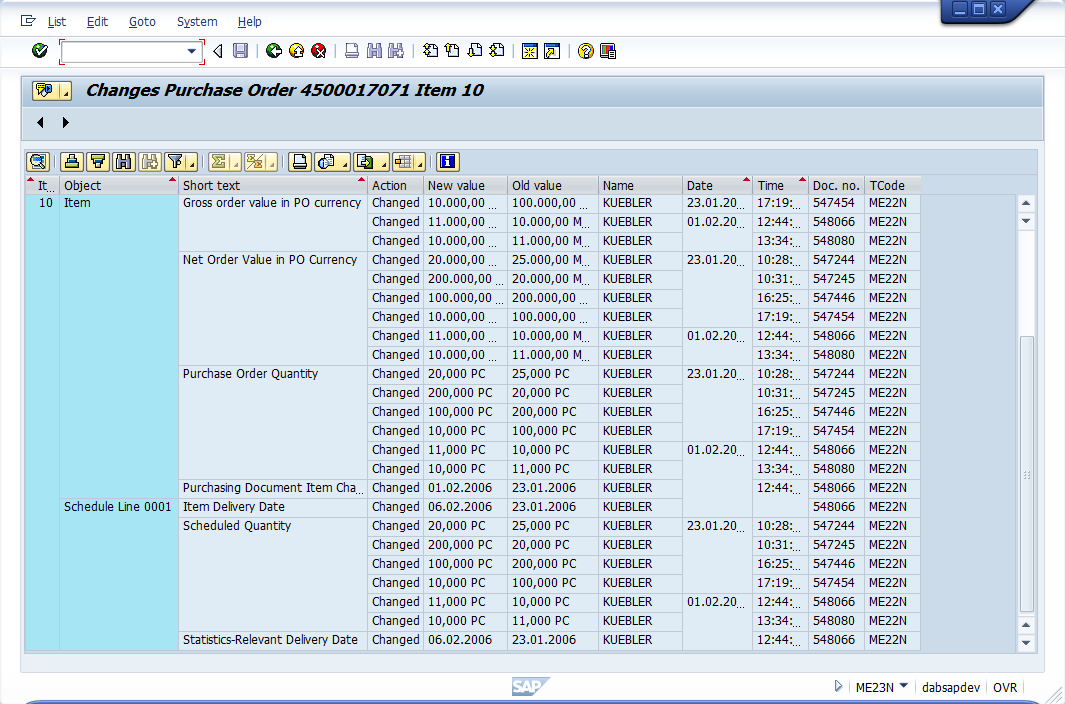SAP® Changes Tables - Transaction Codes
Early 2014 I published a lot of content regarding SAP® Change Tables: Two Blog postings (1, 2) as well as one whitepaper were released. However one piece of the puzzle seems to be missing, and especially in trainings people keep asking me about it: It is change-related SAP® Transactions (T-Codes).
Just as a quick reminder: Identifying changes is key for a lot of data analytic approaches, for example when it comes to topics like payment term or bank account changes, payment block or releasing sales orders above credit limit. Such changes are likely to happen, and SAP® keeps track of it using the change tables, named CDHDR and CDPOS. But how is it possible to identify or simply lookup such change events without having access to the change tables (e.g. using the data browser via T-Code SE16)?
In this article I will be talking about three different ways to achieve this:
- SAP® T-Codes to display changes selectively
- SAP® Reports to create a list display of changes
- Branching to display change information using the SAP® menu
1. SAP® T-Codes to display changes selectively
There are several SAP® transaction codes which will display changes of certain “business objects” (partner, financial document, etc.) directly. Those are usually related to certain topics and not universally valid.
Here is a list of some examples:
- XK04: Vendor account changes
- XD04: Customer account changes
- FB04: Document changes (Financial documents)
- FD24: Credit Management Changes
Let’s take XK04 (Vendor account changes) for example. You can enter a vendor number as well as additional organizational criteria like company code or purchasing organization. Also it is possible to display only changes which were done to “sensitive” (critical) fields.
When executing the transaction, the first screen displays all „Changed Fields“ for the selected vendor account. There are four additional buttons which allow us to customize the way the information is shown:
- It is possible to switch between a display grouped by the “Changed fields” and listing “All Changes”, which includes the details of every change, including old value and new value
- There are two buttons which allow focusing only on “Entries” or “Deletions”
- Clicking on “Field names” toggles between displaying technical fieldnames versus field descriptions
All transactions listed above look and work similar. Transaction FD24 is the second example. It displays changes related to customer credit management. When starting the transaction, it asks for selection criterias like customer number (mandatory) and credit control area or time range.
2. SAP® Reports to create a list display of changes
While the way I just described requires a partner number as selection parameter, sometimes a more general approach is necessary. This can be solved for example by calling SAP® reports like S_ALR_87012089 or S_ALR_87012090 for vendors and S_ALR_87012182 or S_ALR_87012183 for customers.
The next screenshot shows report „S_ALR_87012089”. Obviously it can be used for displaying changes for several vendors at once, or even the changes for all vendors, if no selection parameters are filled in (there are no mandatory fields in this screen).
Using such reports is a great way to list changes. However it needs to be considered that displaying “all” vendors for all company codes and purchase organizations can take a while to perform. It depends on the data volume of the SAP® system you are working with – if it contains a big change history already, you should consider restricting the result by entering appropriate selection criteria.
3. Branching to display change information using the SAP® menu
The two ways we looked at allow us to display changes for „business objects“ like partners (vendors, customers) or a certain document (financial transaction). But how can we display changes for which no special report or transaction code exists? Maybe option 3 is helpful for you then: A lot of transactions allow to branch from their menu to a list of changes related to what you are currently looking at. Let’s take a purchase order in SAP® for example:
Starting point is to display the purchase order („PO“) as usual, for example using T-Code ME23N. Once the PO is on screen, we can go to the menu under “Environment” select between “Header changes” or “Item changes”.
The option to branch to a change display is embedded in several SAP® transactions. Another example is to display a vendor using T-Code XK03, and then using the similar way of going to “Environment-> Account Changes” via the menu bar.
I hope that this article gave you a solid overview about different ways of how to display changes in SAP®, and that you will benefit from it in your daily analytic work.
For any comments on this article, feel free to write us at info@dab-gmbh.de.
To contact the author you can also use LinkedIn or XING (you may have to login first before you can access these links).
LinkedIn: http://de.linkedin.com/pub/stefan-wenig/54/1b8/b30


